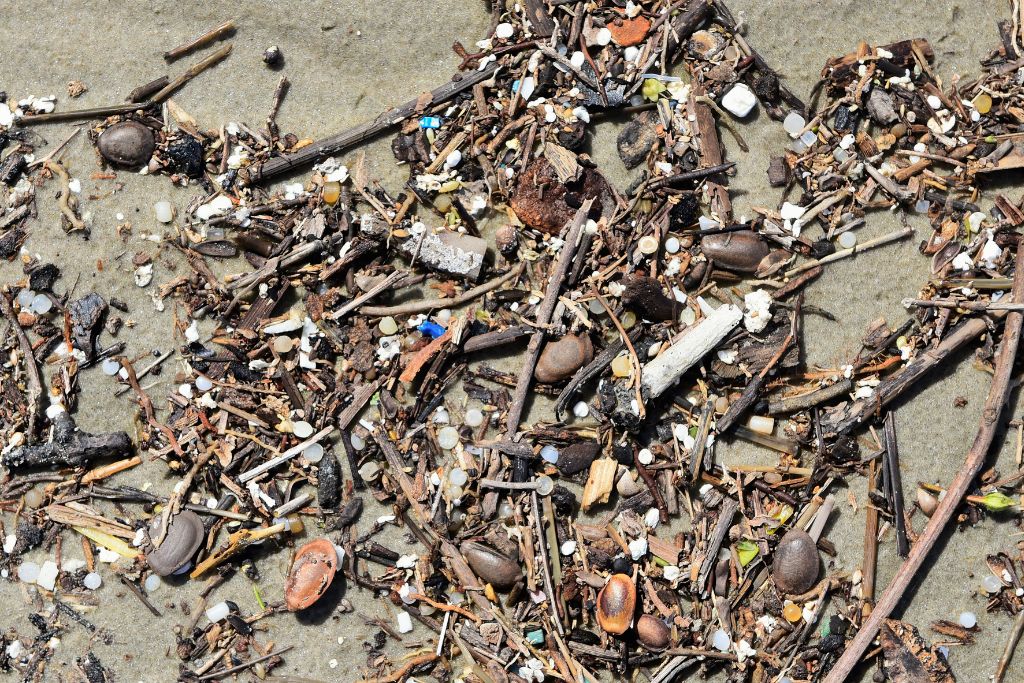As the world’s second-largest plastic polluter, it comes as no surprise that microplastics in Indonesia are a big issue. This article discusses the unspoken consequence of polluting our ocean ecosystem with plastic and focuses on microplastics in Indonesia, an issue so big that is now threatening the country’s entire food chain.
—
Microplastics are small plastic particles sized under five millimetres in diameter. Today, there are 500 times more microplastics in the world than stars in our galaxy, a clear sign that the plastic pollution epidemic has spun out of control.
There are two main types of microplastics: primary and secondary. Primary microplastics are particles that stem from commercial products and microfibres from textiles that drift into the ocean or even from the ocean itself such as fishnets. Secondary microplastic is composed of plastic particles broken down from wave erosion, sun radiation, and other environmental factors.
If you want to learn more about microplastics, check out this article next: What Are Microplastics?
Indonesia is the second-largest plastic polluter in the world after China. 3.9 million tonnes of plastic waste are produced yearly and 1.29 million tonnes pollute the ocean. Natural factors break down said 1.29 million tonnes of plastic waste creating an abundance of microplastics that are then ingested by marine life and thus inevitably make their way into the human food chain. It is not a surprise that the country’s food chain is contaminated.
The tonnes of plastic waste that are dumped into the ocean do not include the amount of microplastic that comes from fishnets. In 2018, Indonesia was ranked the second-largest fishing nation worldwide with an estimated accumulation of 7.22 million metric tons of fish. The excessive fishing using fishnets practices in Indonesia contributes even more to adding microplastic into the ocean, another factor that directly contributes to the microplastic-polluted food chain.
2021 data from the Ministry of Marine Affairs and Fisheries Republic of Indonesia (KKP) showcased the top 10 out of 38 provinces with the highest fish consumption rate per capita, the sum of the 10 provinces resulting in 702,74 kg/capita/year. Based on the set result it is estimated that the consumption of fish in Indonesia reaches 2.670,412 kg/capita/year. The staggering number is concerning due to the possibility that most of the fish consumed may have microplastics in them.
It is currently difficult to gauge the actual amount of microplastic found in the seafood consumed, but fact of the matter is that traces of microplastic reside in fish. A study that investigated fish caught by Indonesian fishermen in Pangandaran Bay, concluded that there were contaminations of microplastic in the digestive tracts of caught fish, which further highlight the gravity of this issue.
It is important to note the fact the study shows that microplastic contamination has reached local fisheries which are concerning since it seems that there is no other option than to accept that plastic will be found whether it is locally fished or store-bought.
There has always been the notion that locally bought products are a better option but now it seems that it is impossible to avoid plastic being a part of our diet. Is that a future that we just have to accept? It is a vicious cycle we use, buy and dump plastic into the ocean polluting and destroying living organisms, which we then consume and ingest plastic ourselves. Despite the famous saying “you are what you eat”, in today’s instance, it is more appropriate to say “you are what you pollute”.
The seemingly irreversible microplastic contamination in our food chain does not pose definitive health concerns. Still, a number of studies have suggested potential health risks that microplastic in our bodies may have. A discussion paper titled “Riverine microplastic pollution in ASEAN countries” mentions that although it is currently unknown the direct damage that microplastic may have to human health, it is known that the very same plastic particles that circulate in our body do contain toxins that can cause cancer, neurological and immune system damage.
Perhaps the biggest concern about microplastic contaminating marine life, the food chain, and the human body is the very fact that it seems to be just a phenomenon we must simply accept. It almost seems that dumping plastic into the ocean, polluting it with microplastic, and ingesting it is normalised with little effort of stopping this issue, ingesting plastic is simply the new diet.
You might also like: Are Microplastics Harmful And How Can We Avoid Them?

















